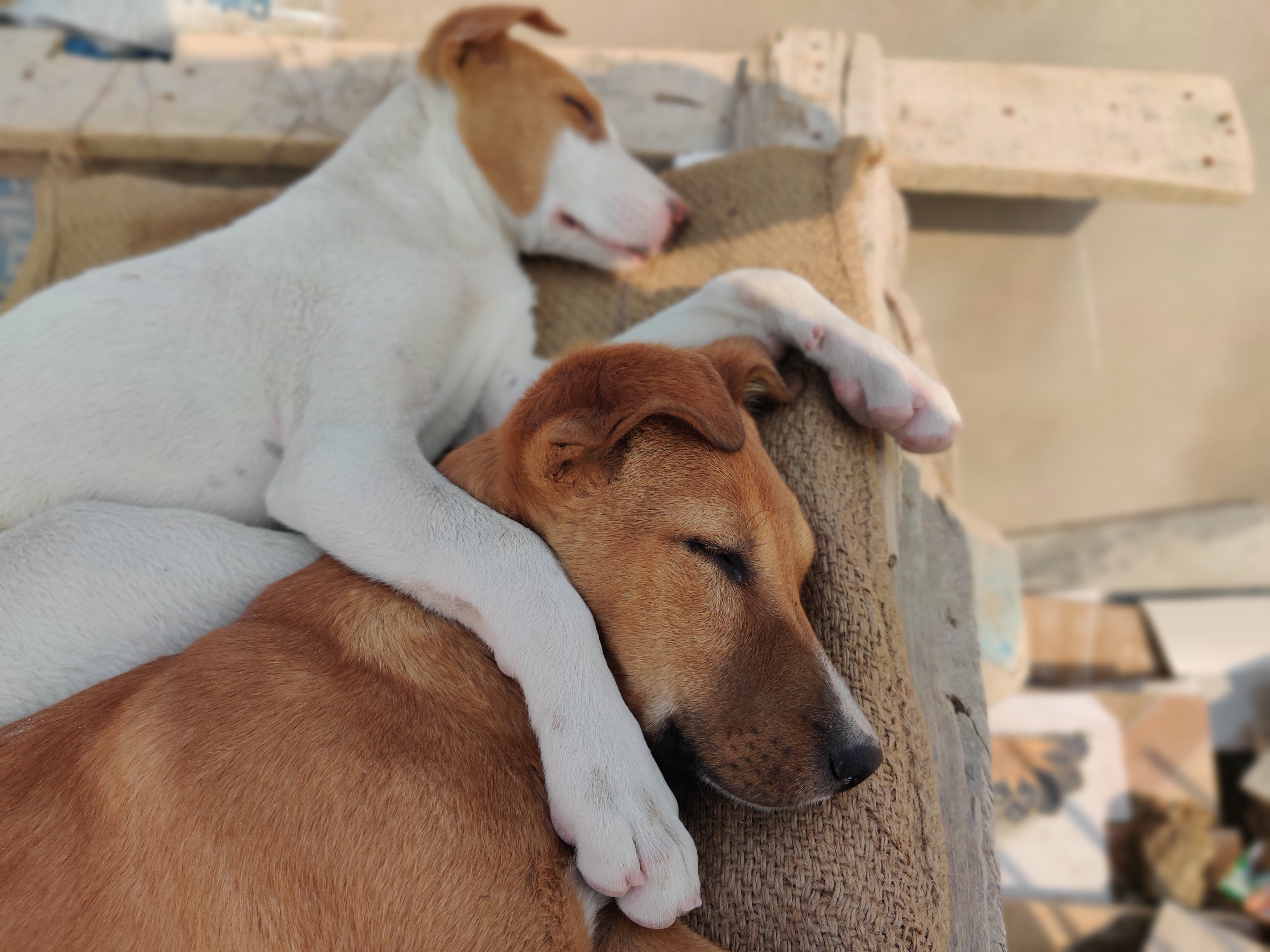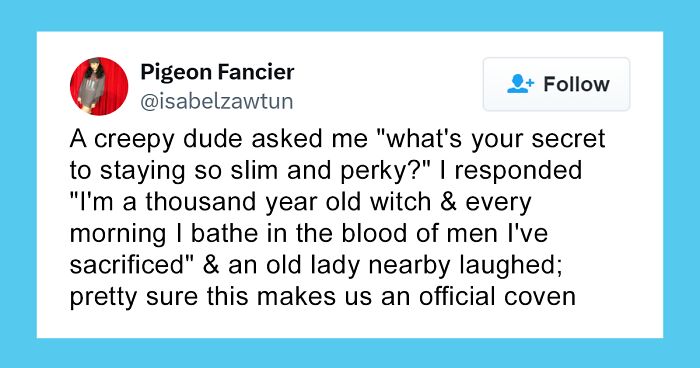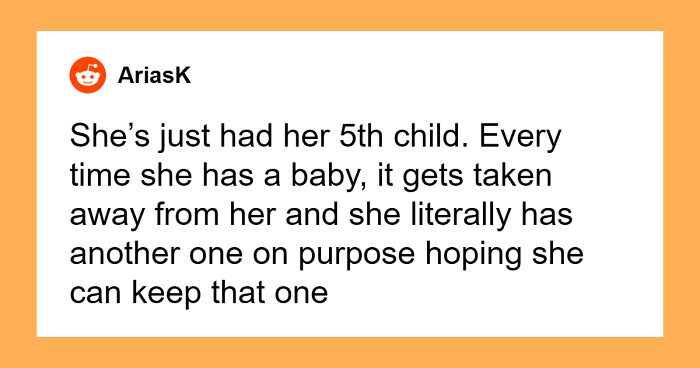Have you ever watched your dog twist, turn, and curl up into what seems like an impossibly cozy position and wondered what’s going through their furry little head? The way our dogs sleep can be a fascinating puzzle that reveals much more than just their preferred comfy spot.
Understanding these positions is more than just satisfying curiosity; it’s about deepening the bond with your loyal companion.
- Superman position implies readiness and playfulness in dogs.
- Side Sleeper indicates a dog feels safe and secure.
- Donut position reflects instinctual behavior for warmth and security.
In this article, we’re going to explore what different dog sleeping position means and decode our four-legged friend’s feelings and needs.
The information provided herein is for informational purposes only. Please refer to our disclaimer for more details..
- 1. The Superman
- 2. The Side Sleeper
- 3. Head and Neck Raised
- 4. The Donut
- 5. The Lion’s Pose
- 6. On the Back
- 7. The Burrower
- 8. The Cuddler Bug
- 9. On the Tummy
- 10. Back-to-Back
- Dog Sleeping Position Behaviors
- How Do Dogs Lay When Sick?
- What Position Should Dogs Sleep In?
- What Is Dog Position In Bed?
- Final Thoughts on Dog’s Sleeping Positions
1. The Superman
In this position, your dog sleeps on their stomach, their front legs stretched out in front and its back legs stretched out behind him. Resembling a flying superhero. This is aptly named the Superman sleeping position. It’s especially common among puppies and younger dogs. They often switch to this posture after a vigorous play session.
Meaning: This position is all about readiness. It suggests that your dog–while resting–is also prepared to jump into action at a moment’s notice. It’s a playful posture, indicating a dog that’s full of energy and might be in a lighter sleep, ready to wake up and continue their adventures. It also helps them cool down, as stretching out can help regulate body temperature.
2. The Side Sleeper
Picture this: your dog is sleeping on their side, legs extended, perhaps twitching a bit as they dream. This is the classic ‘Side Sleeper’ position. It’s a common sight in households with dogs, where they stretch out comfortably on their side, their legs no longer tucked in but rather extended in a relaxed manner.
Meaning: When your dog adopts this position, it’s a sign of several positive feelings. Primarily, it indicates that your dog may feel incredibly safe and secure in their environment. There’s a sense of trust here, your dog doesn’t feel the need to protect themselves. They are at ease, relaxed, and possibly in a deep phase of sleep. Comfort is key in this position. And it’s a heartwarming sign for any pet parent to observe.
3. Head and Neck Raised
Consider the position where your dog sleeps with their head and neck raised, perhaps using a pillow or an elevated surface. While it might seem like a preference for comfort. This position can sometimes indicate more.
Meaning: When a dog consistently sleeps with their head elevated, it could be a sign of breathing issues. It’s their way of making breathing easier. Especially if they have respiratory problems or have a shorter snout. While it’s not always something to worry about, you should pay attention, particularly if they also snore or seem to struggle while breathing.
4. The Donut
Now, let’s curl into the ‘Donut’ position. Here, your dog tucks themselves into a tight ball, nose-to-tail, creating a cozy, circular shape.
Meaning: This coiled position is more than just adorable, it serves a practical purpose. It’s an instinctual behavior for safety and controlling body temperature. By curling into a ball, dogs keep their body heat in and shield their vital organs. This behavior is thrown back to their wild ancestors. It’s not only about physical warmth but also about feeling secure.
5. The Lion’s Pose
Picture your dog, lying down with their head resting gently on their paws, this is the ‘Lion’s Pose.’ It’s a common and majestic stance. It can be often seen after they’ve been playing or during a quiet time of the day. Whether your dog stretches out or curls up, the key feature here is their head on their paws, with eyes often softly closing in contentment.
Meaning: This pose is quite interesting, it’s like your dog is taking a break. But still keeping an eye on things. They’re relaxed, yet they’re also ready to jump up if they need to. This mix of chilling out and staying alert shows that your dog feels safe where they are, but they’re also watching what’s happening around them.
6. On the Back
In this position your dog sleeps on their back, belly exposed to the air, paws dangling in a carefree manner. This is a common sleeping position and it’s not just adorable but also quite telling.
Meaning: Dogs who sleep on the back with their belly exposed are a sign of ultimate trust and comfort. It also means that your dog feels completely safe in their surroundings and without any need to be on guard. The meaning behind this position also helps them cool down. Exposing the belly allows for better heat dissipation.
7. The Burrower
The ‘Burrower’ – a position where your dog snuggles into blankets, pillows, or cushions, creating a cozy nest. They might burrow into the depths of a soft blanket or curl up under a pile of pillows.
Meaning: The Burrower position means dogs need comfort and security. It’s a self-soothing behavior. That helps your dog get warm and feel protected. This position is especially common in dogs who enjoy being enveloped in soft, snug spaces. Offering them a sense of safety and retreat.
8. The Cuddler Bug
Envision your dog seeking out the closest physical contact, snuggling up on top of you or another pet. This is the ‘Cuddler Bug’ position. In which your dog shows their social side, it’s not just about seeking warmth. It’s about the bond they share with you or their furry companions.
Meaning: This position is a heartwarming display of love, trust, and bonding. Dogs who prefer this sleeping style are often very affectionate and they show love and seek security through physical touch.
9. On the Tummy
Picture your dog sprawled out, belly-down, on a cool tile floor or a shady patch of grass. This ‘On the Tummy’ position is a favorite for many dogs, especially on warm days. In this posture, your dog lies flat on their stomach while their legs splayed out to the sides, making the most of the cool surface beneath them.
Meaning: The reason behind this position is quite straightforward – it’s all about temperature control. When your dog feels hot, lying on their tummy on a cold surface. It helps them cool down. It’s a practical way for them to regulate their body temperature. Ensuring they stay comfortable even on the warmest days.
10. Back-to-Back
Consider the moments when your dog tries to sleep with their back pressed against you or another dog. This is called the ‘Back to Back’ position. It’s common when dogs want to get close bonds with their fellow pets or human family members.
Meaning: By sleeping in this position, your dog is showing a deep sense of trust and love. It’s a way for them to stay connected. And feel secure, drawing comfort from physical contact from you. This position is a beautiful testament to the bond you share with your furry friend.
Dog Sleeping Position Behaviors
Understanding your dog’s sleeping habits is just as fascinating as deciphering their waking actions. Here’s a friendly guide to what goes into your dog’s mind when your pup is in dreamland:
Twitching in Sleep
Just like us, dogs often twitch in their sleep. This is a normal part of transitioning between sleep stages, so there’s no need for concern.
Dreaming Dogs
Believe it or not, dogs dream too! You might notice this when they’re snoozing.
Paw Movements
Ever noticed your dog’s paws moving while they sleep on their side? They’re likely responding to a dream. Perhaps imagining a playful run.
Sleep Barking and Squeaking
Dogs can make noises like barking or squeaking, or breathing fast in their sleep. Think of it as their version of sleep talking, often a reaction to dream activities.
Pre-Sleep Rituals
Circling or pawing at their sleeping spot before lying down is a typical dog behavior. It’s their way of making their dog bed just right for a good night’s sleep.
Snoring
Snoring is more common in certain breeds, brachycephalic breeds – those with shorter snouts. While usually normal, if you’re ever concerned, it’s best to consult a vet.
Now that you’re clued up on your dog’s sleeping behaviors. You’re well on your way to becoming a pro at understanding their body language, even in their sleep!
How Do Dogs Lay When Sick?
When dogs are sick, their sleeping patterns and positions tell the discomfort or pain they are feeling. Common signs to watch out for:
- Laying in a curled-up position: This can indicate an attempt to protect a painful area. Or to conserve body heat. If they’re feeling cold due to illness.
- Laying on their side: If they’re lethargic or weak, they might sleep on one side more than usual.
- Seeking isolation: Some dogs prefer to be alone when they’re not feeling well. And, choose a secluded spot to rest.
- Restlessness: Frequent changing of positions or inability to get comfortable can also be a sign of discomfort or pain.
- Stiffness or reluctance to move: It can indicate joint pain or general malaise.
Note: It’s important to note that when your dog sleeps a lot and also shows other symptoms like changes in appetite, behavior, or energy levels, it should get a consultation with a veterinarian to determine the cause and appropriate treatment.
What Position Should Dogs Sleep In?
Dogs naturally choose their sleeping positions based on comfort, temperature, and security. There isn’t a “one-size-fits-all” position that’s best for all dogs.
Some dogs prefer sleeping on their side (indicating relaxation and trust). While others might curl up in a ball for warmth and protection.
Letting your dog choose their preferred position is ideal. It allows them to sleep in a way in which they are both physically comfortable and emotionally secure. Observing their chosen positions can also provide you the insights into their well-being and personality.
What Is Dog Position In Bed?
A dog’s position in bed can vary greatly depending on their personality, comfort, and mood. Common positions they love to sleep include:
- Curled Up
- On the Side
- On the Back
- Sprawled Out
- Head and Neck Raised
- Snuggled Against Others
Final Thoughts on Dog’s Sleeping Positions
In the fascinating world of our furry companions, every sleeping position is a silent yet expressive language that reveals our dog’s innermost feelings and needs. From the protective curl of the ‘Donut’ to the trusting vulnerability of ‘On the Back’. Each posture is a chapter in the story of their well-being and emotional state and as devoted dog owners, we should take the time to understand these positions. Because these deepen our bond with our pets and allow us to provide them with the care and comfort they deserve.
So, the next time you find your dog in one of these positions, take a moment to think about what they are trying to tell you. Your awareness and understanding are key to fostering a loving and supportive relationship with your beloved pet.
3Kviews
Share on Facebook
 Dark Mode
Dark Mode 

 No fees, cancel anytime
No fees, cancel anytime 



 Image credits:
Image credits:  Image credits:
Image credits:  Image credits:
Image credits:  Image credits:
Image credits: 
 Image credits:
Image credits:  Image credits:
Image credits: 

 Image credits:
Image credits:  Image credits:
Image credits:
























-1
0